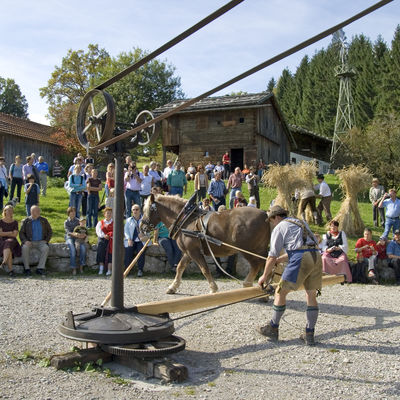65a Horse mill at Bundwerk barn from Albaching
District: Altötting
Type of Building:
technical constructions
Horse mills were commonplace in farming from approximately 1850 until the 1930s. They were primarily used to run threshers or feed cutters, but also circular saws. This propulsion technique spread further again from approximately 1890 onwards thanks to the invention of the horse-powered threshing machine, which meant that most large farms had a horse mill by 1900.
Did you know?
The horse mill has a vertical axle which is slowly rotated by horses or oxen as they move and pull the drawbar. An integrated gear ratio multiplies the rotation speed to meet the requirements of the machine which is to be propelled. With the vertical shaft whim, the power is transferred over the heads of the draught animals. At the top of the vertical axle, there is another gear mechanism and pulley from where the machine is propelled via a drive belt and a transmission shaft.


